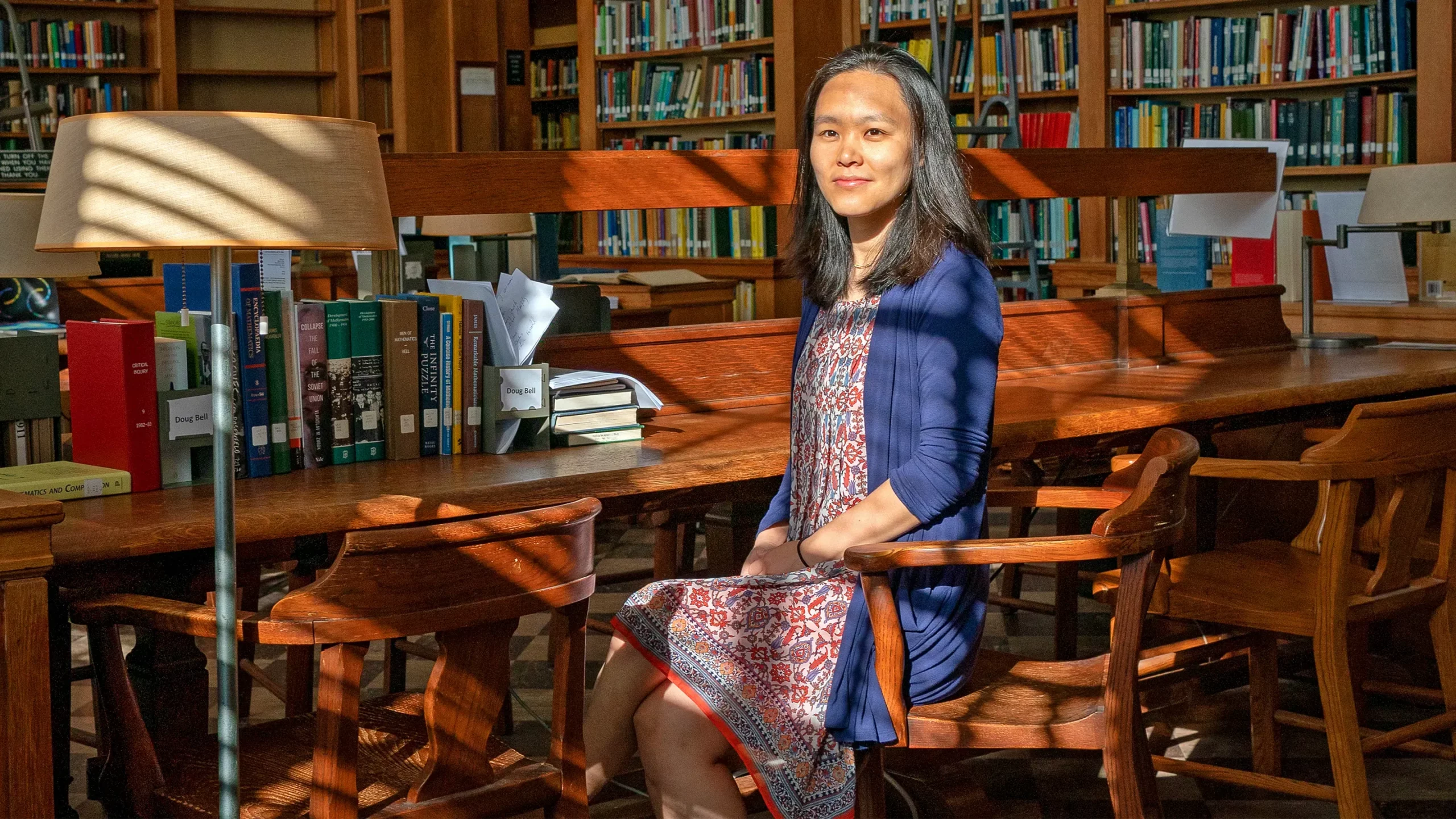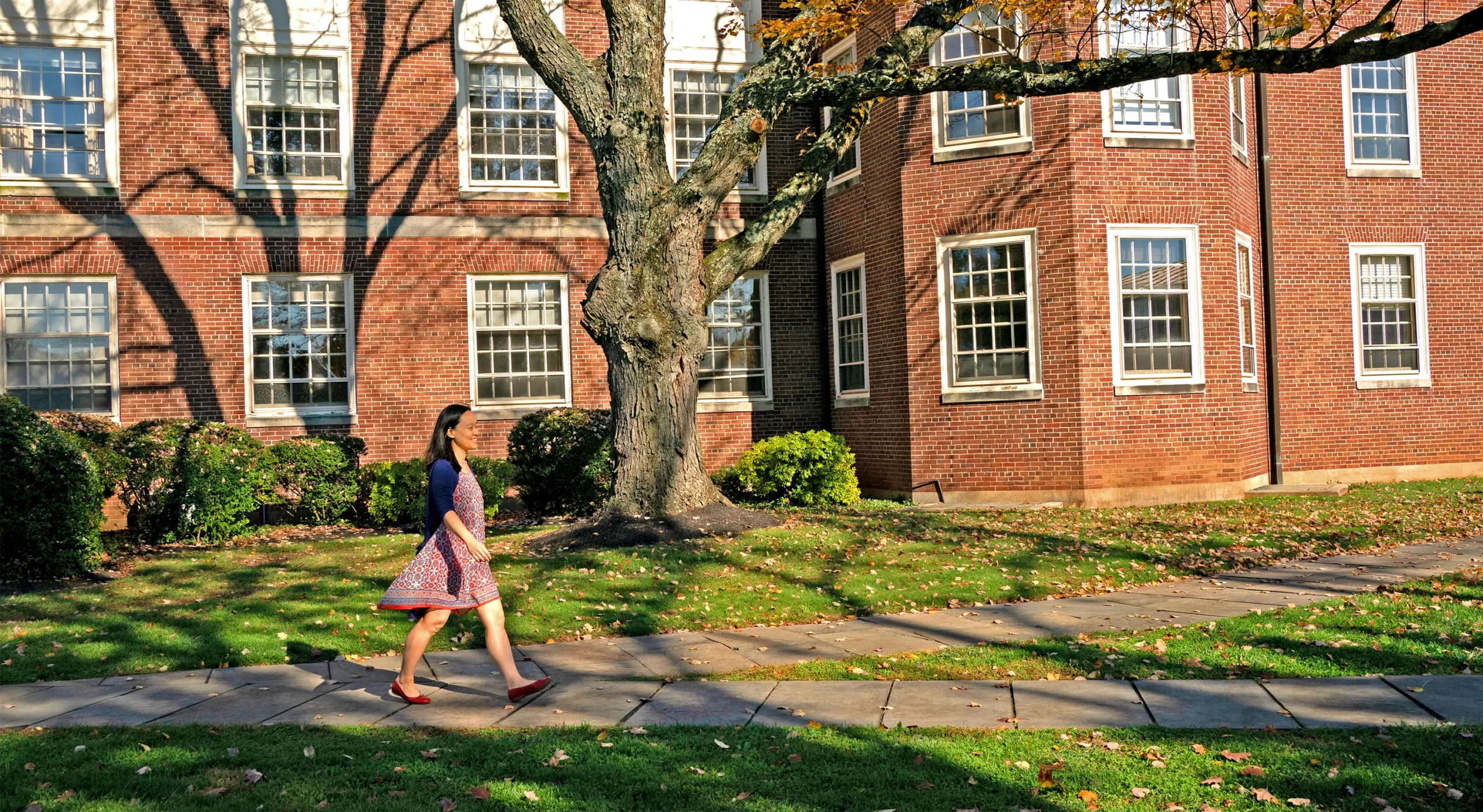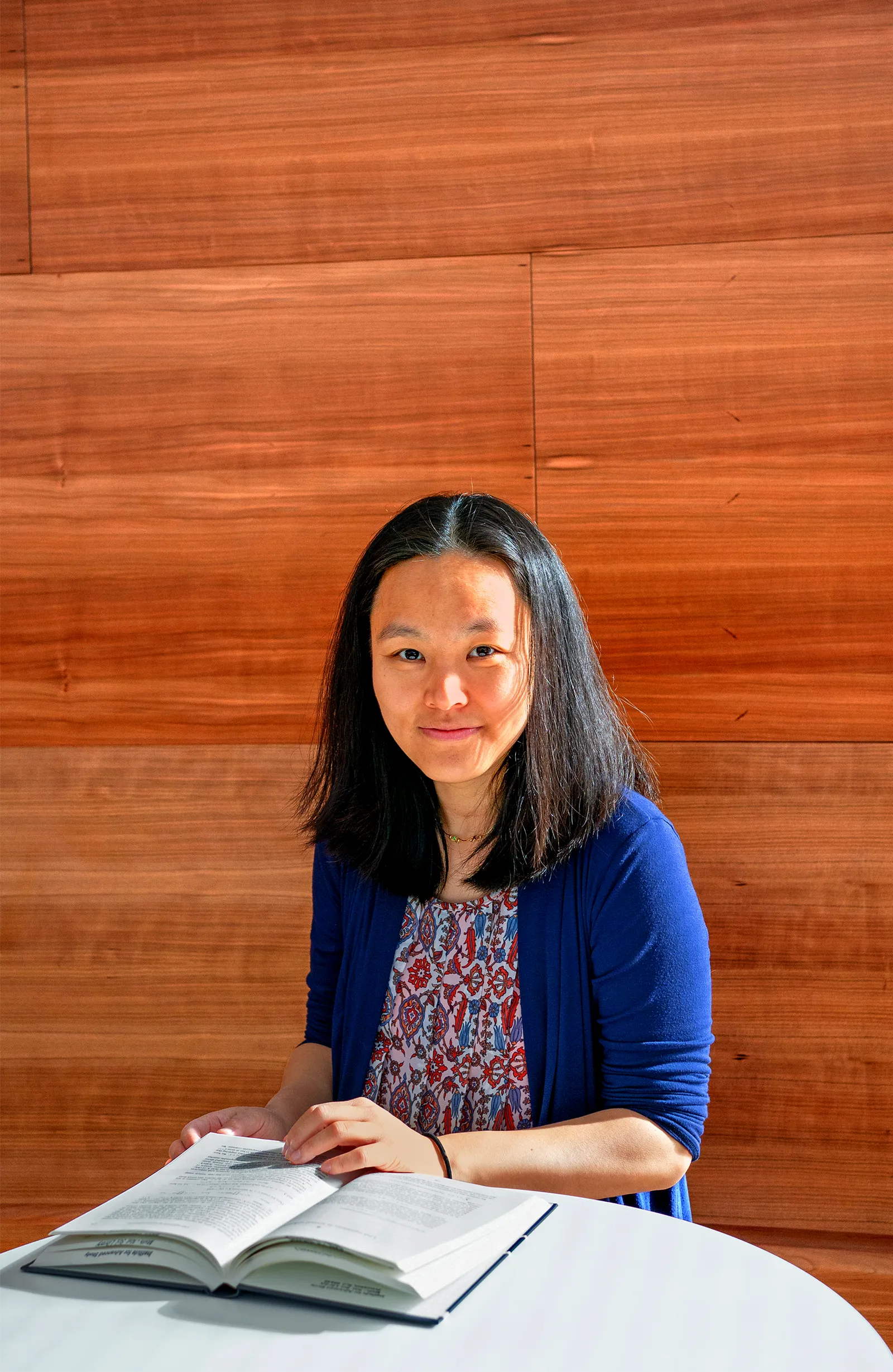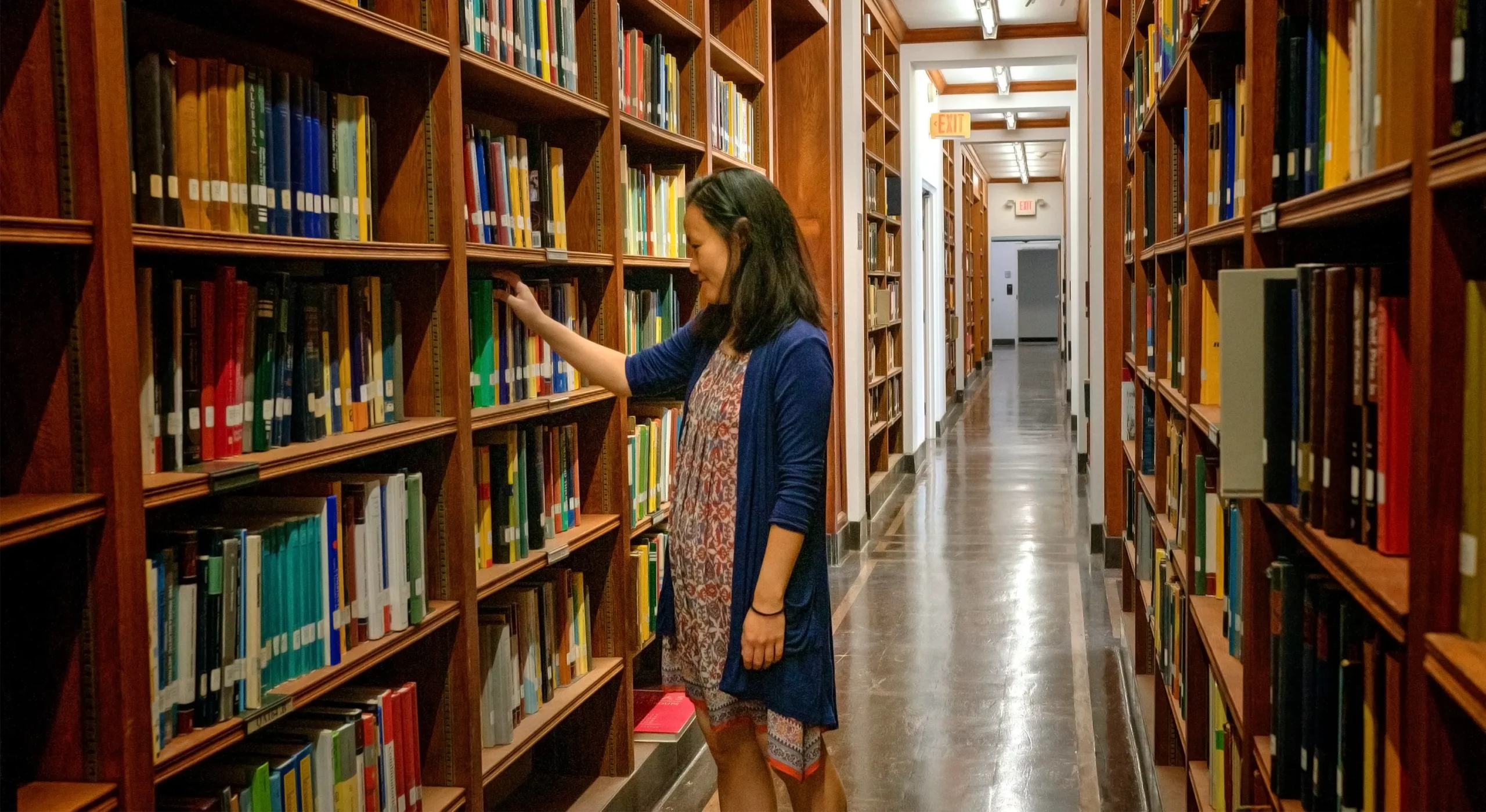A Mathematician Dancing Between Algebra and Geometry

Wei Ho in the Mathematics–Natural Sciences Library at the Institute for Advanced Study in Princeton, New Jersey.
Caroline Gutman for Quanta Magazine
Introduction
Like many people who would go on to become mathematicians, Wei Ho grew up competing in math contests. In eighth grade, she won the Mathcounts state competition in Wisconsin, and her team took third place at nationals.
Unlike many future mathematicians, she wasn’t sure she ever wanted to become one.
“I wanted to do everything, all the time,” Ho said. “I took ballet very seriously until early high school. I edited the literary magazine. I did debate and forensics. I played tennis and soccer and piano and violin.” By contrast, many successful mathematicians appeared to be obsessed with math to the exclusion of everything else. How could she, a person with numerous passions, compete with that level of focus?
Ultimately, Ho was drawn to the rigor of mathematics. She still enjoys ballet, reading novels and doing cryptic crossword puzzles, even as she helps to reinvent the mathematical machinery that underpins fundamental mathematical objects, such as polynomial equations, which have long-standing and perplexing open questions associated with them.
Ho studies familiar geometric objects, but she reformulates the questions to situate them in the realm of the rational numbers — numbers that can be written as fractions. “Then number theory starts to get mixed into all of this,” she said.
She is especially interested in elliptic curves, which are defined by a particular kind of polynomial equation that has applications in different branches of mathematics. Elliptic curves appear in analysis — broadly speaking, the study of continuous things, like the real numbers — and in algebra, which is about finding and defining precise mathematical structures. (Though their focus is different, analysis and algebra are divided more by sensibility than by a strict boundary, as there is plenty of overlap between them.)

Ho said she often thinks of algebra and geometry as “essentially the same.”
Caroline Gutman for Quanta Magazine
In a barrier-breaking preprint released in 2018, Ho and her collaborator Levent Alpöge of Harvard University discovered a new upper bound for the number of integer solutions to polynomials that define elliptic curves. Their technique draws upon the decades-old work of Louis Mordell, an American mathematician who emigrated to Britain in 1906. In their paper, Ho and Alpöge were able to glean new information about the distribution of these integer solutions that had evaded other teams studying similar problems.
Ho is spending the year (on leave from her faculty position at the University of Michigan) as a visiting professor at the Institute for Advanced Study, where she was recently named the first director of the IAS’s Women and Mathematics program. She is also a 2023 fellow of the American Mathematical Society and a research scholar at Princeton University.
She’s hopeful that directing the Women and Mathematics program will “at least help the community more, help more people, instead of just me being in my office doing math research by myself or with collaborators,” she said. “I can prove theorems, and maybe someday I can prove a theorem that in 100 years will matter. Maybe, maybe not. But I felt like I wasn’t making enough impact on the world or on people around me.”
Quanta spoke with Ho in a series of videoconferences. The interviews have been condensed and edited for clarity.
How would you describe the way you do mathematics?
Sometimes mathematicians divide ourselves into algebraic and analytic people. The math I do touches both sides, but at heart, I am an algebraist, though I’m geometric in the way I think. I often tend to view algebra and geometry as essentially the same.
That’s not quite accurate, but basically since the work of Descartes and especially in the last century, the two subjects have become really close. There is a rather precise dictionary that can, in some situations, help translate a geometric picture to algebraic consequences.
In my own case, the geometric picture often helps formulate statements and conjectures and give intuition, but then we translate them to algebra when writing. It’s easier to detect mistakes as algebra is typically more rigorous. It can also be easier to use algebra when geometry gets too hard to visualize.

“There is a rather precise dictionary that can, in some situations, help translate a geometric picture to algebraic consequences,” Ho said.
Caroline Gutman for Quanta Magazine
What ideas have you been focusing on in your recent work?
Quite a bit of my work does have to do with elliptic curves, which are very natural objects in number theory and arithmetic geometry.
It should be hard to have integer solutions of equations like these. We expect, basically, almost all curves should have no integer solutions. But it’s very hard to prove that.
Levent and I studied this distribution of the number of integral points. We use a classical construction from Mordell’s 1969 book Diophantine Equations. We’re able to give an upper bound on the number of integral points on an elliptic curve. Other people have given upper bounds. We found a different bound that is simple to state.
What role did Mordell’s earlier work play in your recent result?
Our question involves integral points on elliptic curves. Mordell has a way of relating it to something else that we’re able to study.
That’s something we do all the time in math: We want to understand an object, but we have to find a proxy to understand it. Sometimes that proxy is very accurate. Sometimes it loses information. But it’s actually something we can access.
When did you decide to focus on mathematics?
I don’t think there was a tipping point for me. I’m happy with my life and career now, but I feel that if things had been slightly different, I could have been happy in many careers or other fields. Maybe that’s something most mathematicians wouldn’t say, because they like to talk about how passionate they are about math and how they could never think about anything else. For me, I don’t think that’s true.
I am curious about lots of different things. Perhaps I ended up being a mathematician because I was frustrated with the lack of rigor in other fields. As a child, I was trained to think like a mathematician in some ways, because that’s how we did things at home. My dad played math games with me, which meant I was learning logical reasoning from a young age. I wanted things to be proved.
But I wasn’t sure that I would be a good mathematician.
Why?
When I was younger, I didn’t know that many math people who were like me in different ways. We throw these words around about role models. It’s not just that I didn’t see enough women or Asian American women.
What I mean is that I didn’t see many people who were passionate about things other than mathematics. That made me doubt myself a lot. How can I be successful at mathematics if I don’t spend 100% of my time thinking about math? That’s what I saw around me. I had the impression other people were approaching math differently than I was, my peers and people older than me. I thought it was difficult to pursue a career where I wasn’t going to be like that. I would have other interests.
The human aspect is something I didn’t see other people caring about as much. I was afraid that part of me was going to make me bad at becoming a mathematician.

Ho is helping to create a giant online compendium of proofs in algebraic geometry called the Stacks project.
Caroline Gutman for Quanta Magazine
You were just named director of the IAS’s Women and Mathematics program. What does that program offer women mathematicians?
It’s a weeklong workshop for women at different career stages, including undergraduate women, graduate students, postdocs, and some junior and senior faculty. It’s learning mathematics in a supportive environment.
Undergraduates who may not have known that they want to pursue math are meeting very senior mathematicians and getting mentoring all the way up. They can see many different people at different career stages and talk to people about their experiences. I don’t think there are many other programs that have that entire range and are focused in a particular subfield.
The 2023 program is called “Patterns in Integers.” It will have a lot of people in additive combinatorics and analytic number theory. We bring in people from different career paths for them to meet.
For the older graduate students already working in this area, they’re meeting postdocs, junior and senior faculty in their field, and getting a chance to work alongside them for a week.
You’re also involved in the Stacks project, which is an extensive online resource. What’s unique about it?
The sheer volume and accessibility of it. It’s this massive — more than 7,500 pages if you printed it out — online collaborative project. But realistically, [the Columbia University mathematician] Aise Johan de Jong writes nearly all of it. It’s a rigorous, carefully written resource for algebraic geometers. It’s an amazing thing he’s done for the community.
Every week or two, it grows. It’s a trusted reference for nearly anything. It covers a huge amount of algebraic geometry that you would need to look at like 20 textbooks for.
It’s living in the sense that things can be added and edited. If there are mistakes, they will be caught.
The other thing that’s kind of interesting about it is the tag system. Even though this document is constantly growing, you can still reference a specific tag forever. There are over 21,000 permanent tags for particular results you might want to quote. Pieter Belmans built the whole back end, which has been used in other projects as well. Other people have adapted the technology of it.
The problem is — and Johan knows this — he’s eventually not going to be able to keep writing this. Someday, if we want this to continue, it needs other people to be more involved.
What role do your workshops play in the Stacks project?
The point is to start getting younger people involved. We’re having them write bits and pieces that may eventually get incorporated into it. There are some tensions here, because for the website to remain correct and high quality as a resource, it needs to be moderated carefully. So Johan still needs to do a lot of the work in putting things into it. It cannot be like Wikipedia where anyone can touch it. That’s a little unfortunate but has to happen if you want this to work.
We’re trying to figure out ways to slowly get more people involved in the Stacks project. We’re bringing mentors in to work on projects with graduate students and postdocs. They learn some algebraic geometry. Then they write something up.
We just published a volume with a bunch of expository articles that we hope will eventually go into the Stacks project.
The Stacks project could continue to be extremely impactful for hundreds of years if enough people get involved and keep it going.



